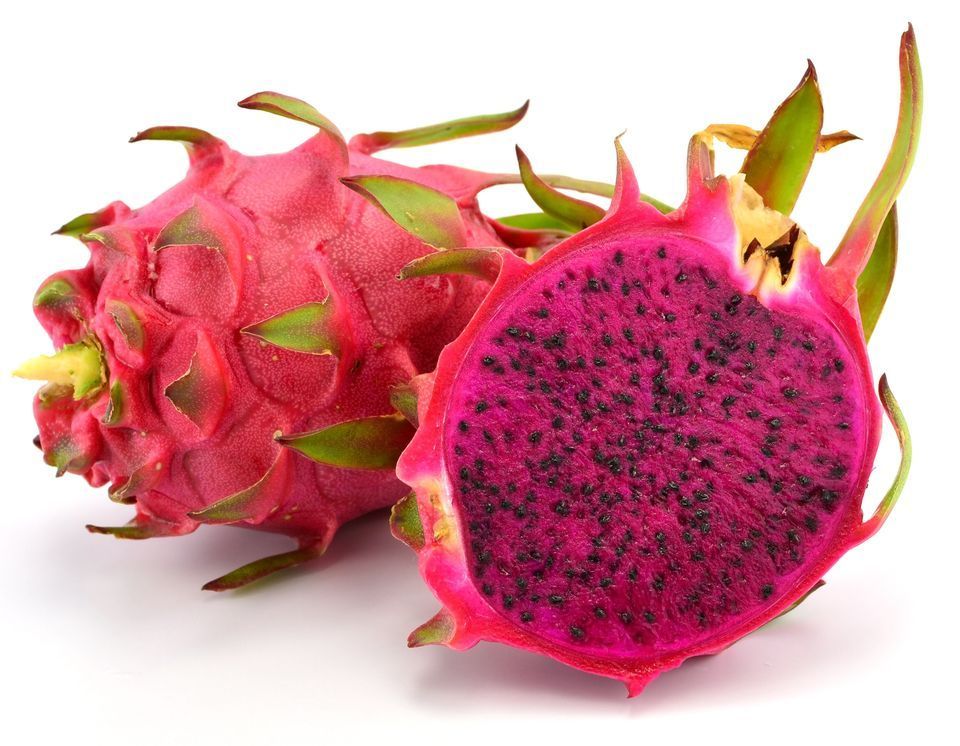
PRODUCTS
16-07-2023 by Leni Frau

Dragon Fruit or Pitaya is a tropical fruit belonging to the family of Cactacaceae, such as prickly pear. Although it is native to Central and South America, today it is particularly common in Asia and in tropical countries where there is a climate suitable for its growth, such as Kenya. The fruit strikes immediately for its aspect: it has a fuchsia colored skin, very thick and provided with big scales with green tips. The pulp has a creamy consistency and is characterized by a myriad of tiny black seeds, just like kiwi fruit, and the taste is very pleasant, sweet and refreshing. There are four varieties of this fruit: three are pink with a different colored pulp inside which can be white, purple or red. The fourth one is a smaller and sweeter hybrid variety with yellow skin and white pulp but the latter is more popular in the Philippines.
Even in Kenya, where there is a growing interest for healthy eating, its demand is increasing but production is still rather limited, so much that it is retailed between Ksh1,000 and Ksh2,000 per kilo.
Its weight can vary from about 200 to 600 grams and it can be found in the fruit and vegetable departments of stores and supermarkets even on the coast.
This particular-looking fruit is a concentrate of vitamins, minerals, and fiber.
It is a fruit with strong antioxidant and anti-aging capabilities. In fact, in addition to vitamin C, it is very rich in betalains, natural pigments that give color to flowers and fruits, which have a remarkable antioxidant power and a high capacity to remove free radicals.
Dragon fruit is also good for the liver thanks to phytoalbumins which help in the purification and detoxification of blood and liver because they increase the excretion of toxins and heavy metals from the body; moreover, it is rich in mineral salts, in particular calcium and sodium and, to a lesser extent, in selenium, sincum and sagnesium.
Although it is a very sugary fruit, it can also be eaten by people suffering from diabetes, of course without exaggerating quantities and avoiding eating it alone, maybe combining it to some yogurt or dried fruit, or to make excellent and tasty juices and smoothies.
Even the other parts of the plant can be used, for example roots and flowers make wonderful herbal teas, whereas the stem is used to make bath soap.
Dragon fruit season in Kenya runs from November to May, with January, February and March being the peak months.
All we have to do is wait a few months to taste it.
NEWS
by redazione

The Ministry of Trade and Industry of Kenya has decided to close all shops selling retail products or materials...
PRODUCTS
by redazione
EVENTS
by redazione

Tomorrow, Saturday 2nd October, Malindi will once again meet in the name of sharing, the exhibition...
EVENTS
by redazione

The Fishing Club starts 2022 with its first monthly market where you can find a little bit of...
EVENTS
by redazione

With the first Saturday of March the monthly market of Malindi is back at the Sea Fishing Club, where...
EVENTS
by redazione

The low tourist season and the first rains certainly don't stop the monthly market of Malindi at the...
RESTAURANTS
by redazione

The legendary Vespa, parked in the small square of Karen's "The Hub" shopping center, greets customers...

It is simply called "mrangi", colored paint.
The Bixa Orellana...
TERRITORY
by redazione

NEWS
by redazione

Three suppliers of products and services of an Italian tour operator in Watamu have approached...
EVENTS
by redazione

It happens every first Saturday of the month: the traditional Farmer's market takes place at Driftwood Club in Malindi, with its organic and natural products. From the first morning, the meeting is at the garden of the wonderful resort near the indian ocean, on...
RECIPES
by redazione

Chutney is a typical sweet-and-sour British sauce made with fruit or green tomatoes. It is excellent as a sauce for flavouring meat and fish foods.
The British took her to Kenya during colonialism and tried the variants with exotic fruit. Here...